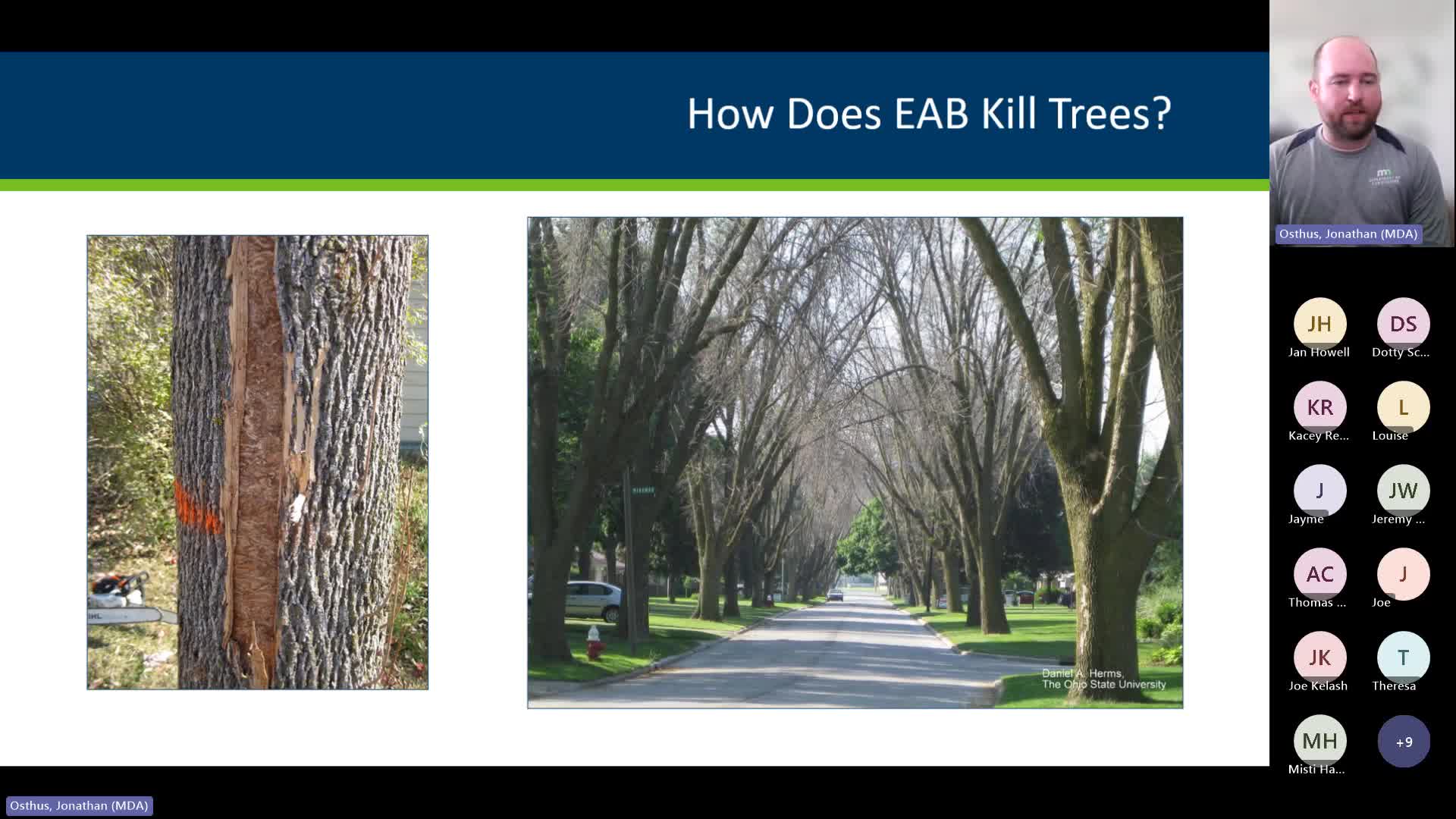Minnesota Experts Warn About Emerald Ash Borer Threat to One Billion Ash Trees
March 08, 2024 | Agriculture, Department of , Agencies, Boards, & Commissions, Executive, Minnesota

This article was created by AI summarizing key points discussed. AI makes mistakes, so for full details and context, please refer to the video of the full meeting. Please report any errors so we can fix them. Report an error »

Pine and Renville Counties are gearing up for a significant battle against the emerald ash borer (EAB), a destructive pest threatening the region's ash tree population. During a recent informational meeting hosted by the Minnesota Department of Agriculture, experts emphasized the urgency of early detection and management strategies to mitigate the impending crisis.
The emerald ash borer, known for its cryptic nature, often goes unnoticed for years as it slowly infests trees. However, once the population explodes, communities can face rapid tree mortality, leading to hazardous conditions and substantial financial burdens for local governments. With over a billion ash trees in Minnesota—representing about one in five trees in many communities—the potential impact is staggering.
Participants learned that the key to managing EAB lies in early detection. Identifying signs of infestation, such as distinctive S-shaped feeding galleries beneath the bark, can help communities act swiftly. Experts recommend that municipalities flag ash trees in public spaces to raise awareness and encourage residents to report any signs of infestation.
The meeting also highlighted the three native ash species in Minnesota—black, green, and white ash—all of which are highly susceptible to EAB. As the pest continues to spread, the need for proactive measures becomes increasingly critical. Communities are urged to monitor for woodpecker feeding damage, bark splits, and canopy thinning, which are indicators of EAB presence.
As the emerald ash borer poses a significant threat to Minnesota's urban and rural landscapes, the meeting underscored the importance of community involvement in monitoring and reporting. With timely action, local governments can better manage the impact of this invasive species and protect their valuable tree resources.
The emerald ash borer, known for its cryptic nature, often goes unnoticed for years as it slowly infests trees. However, once the population explodes, communities can face rapid tree mortality, leading to hazardous conditions and substantial financial burdens for local governments. With over a billion ash trees in Minnesota—representing about one in five trees in many communities—the potential impact is staggering.
Participants learned that the key to managing EAB lies in early detection. Identifying signs of infestation, such as distinctive S-shaped feeding galleries beneath the bark, can help communities act swiftly. Experts recommend that municipalities flag ash trees in public spaces to raise awareness and encourage residents to report any signs of infestation.
The meeting also highlighted the three native ash species in Minnesota—black, green, and white ash—all of which are highly susceptible to EAB. As the pest continues to spread, the need for proactive measures becomes increasingly critical. Communities are urged to monitor for woodpecker feeding damage, bark splits, and canopy thinning, which are indicators of EAB presence.
As the emerald ash borer poses a significant threat to Minnesota's urban and rural landscapes, the meeting underscored the importance of community involvement in monitoring and reporting. With timely action, local governments can better manage the impact of this invasive species and protect their valuable tree resources.
View full meeting
This article is based on a recent meeting—watch the full video and explore the complete transcript for deeper insights into the discussion.
View full meeting
